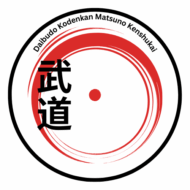Static and Dynamic Training Methods
In both Jujitsu and Karate, techniques are practiced in two fundamental modes: static (stationary) and dynamic (moving). Each serves a distinct purpose in developing effective skill, awareness, and adaptability.
Static Techniques (Stationary Training)
Static techniques are practiced when one or both practitioners are relatively still or moving minimally. These drills emphasize proper form, precision, structure, and control.
In Jujitsu, static training focuses on applying joint locks, throws, or escapes with deliberate technique. Speed and force take a back seat to proper execution. Practitioners learn to generate effectiveness through posture, leverage, and angles. This careful approach builds understanding of how techniques actually work.
In Karate, this approach appears in kihon (basic techniques), kata (forms), and line drills. Students practice strikes, blocks, and stances without movement across space. The aim is to refine accuracy, breathing, and body alignment. Each movement gets full attention and careful correction.
Static practice is especially important in early stages of learning. Understanding the biomechanics of each move lays the foundation for safe and effective application. Students build muscle memory and proper habits before adding complexity.
Dynamic Techniques (Moving Application)
Dynamic techniques involve active movement from both practitioners. They integrate footwork, timing, and real-time responsiveness. These are used in more realistic scenarios where momentum and rhythm influence the outcome.
In Jujitsu, dynamic training includes flowing drills, throws executed while moving, and counters that rely on the opponent’s momentum. This method better simulates real-world self-defense situations. Students learn to adapt their techniques to changing circumstances.
In Karate, dynamic techniques are central to kumite (sparring). Students must blend offense and defense while adjusting to the opponent’s movement, speed, and strategy. Transitioning smoothly between techniques becomes essential. Quick decision-making develops alongside physical skill.
Dynamic training sharpens reflexes and teaches how to remain balanced and adaptable under pressure. It bridges the gap between knowing a technique and using it effectively.
Integration and Purpose
Both static and dynamic training methods are essential. They complement each other in important ways.
Static drills build technical accuracy, structure, and discipline. They create a solid foundation of understanding and proper form.
Dynamic application develops timing, adaptability, and fluidity. It teaches students how to use their skills when it matters most.
Together, they form a complete approach that prepares students for both controlled practice and real-life encounters. The progression from static to dynamic mirrors a deeper learning arc. Students move from form to function, from technique to expression. This journey transforms mechanical knowledge into practical wisdom.
